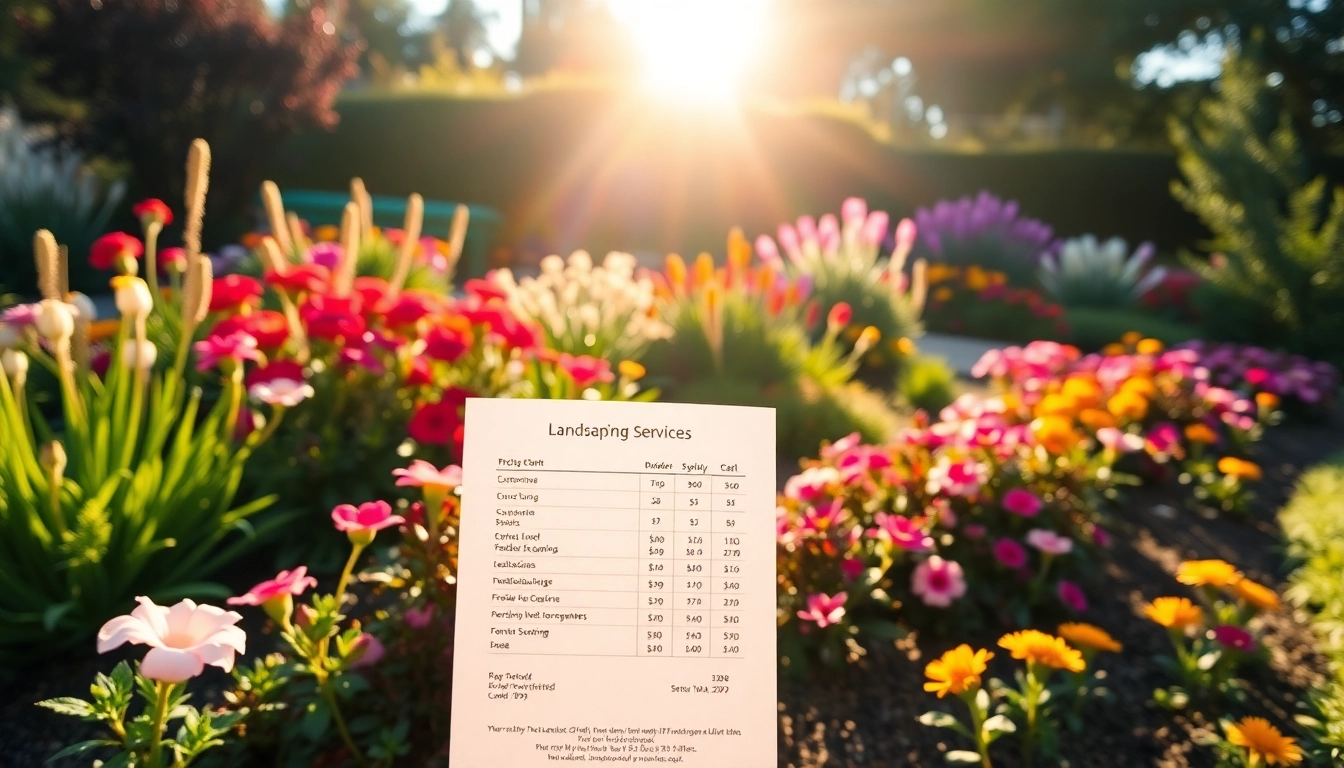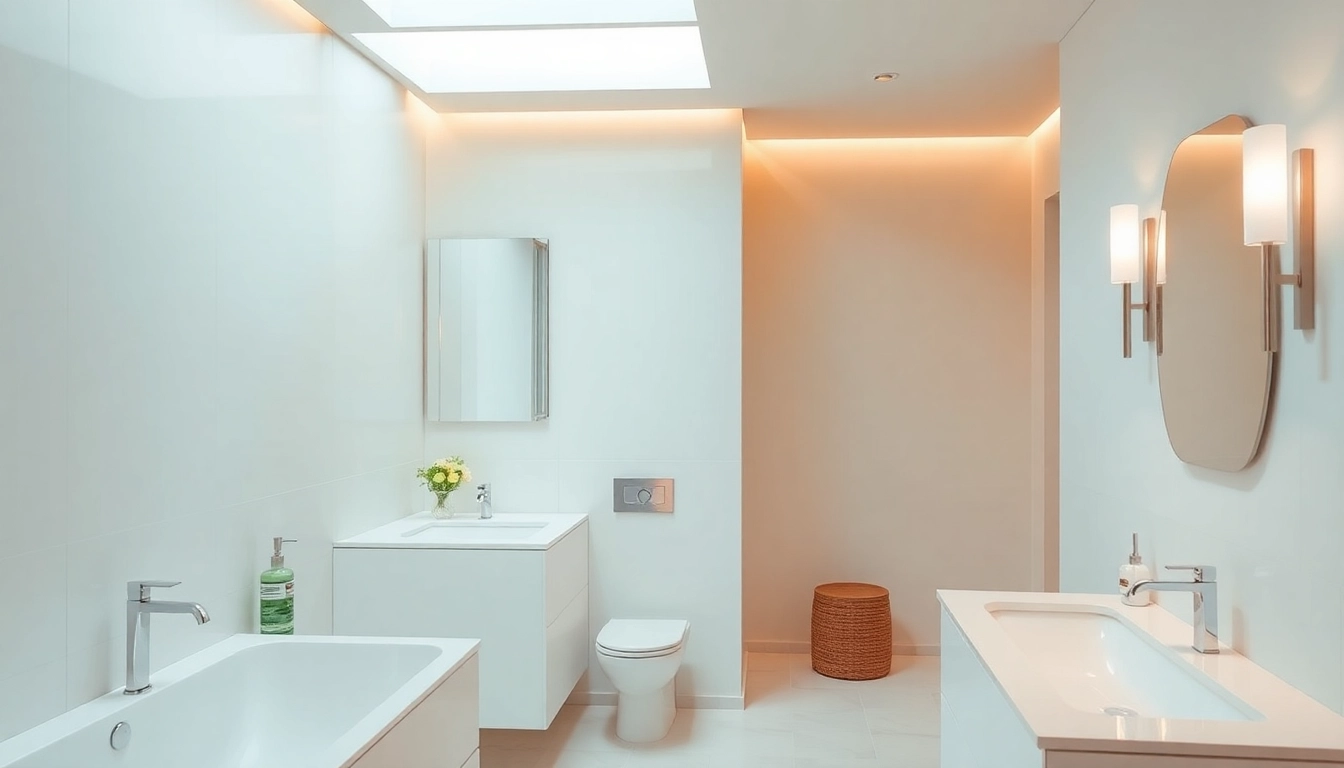Understanding Landscaping Company Pricing
When planning a landscaping project, understanding the pricing structure of landscaping companies is fundamental. Factors such as the scope of work, materials used, and labor costs play a significant role in determining the overall expense. This article delves deep into landscaping company pricing, breaking down various aspects that influence costs and helping you approach your next project with confidence.
Factors Influencing Landscape Costs
Several key elements contribute to the pricing of landscaping services:
- Project Scope: Larger projects naturally incur higher costs. The complexity and size dictate the hours and resources required to complete the job.
- Material Selection: Choices in stones, plants, hardscaping materials, and soil affect budgeting. For example, premium flagstone will cost significantly more than traditional concrete.
- Location: Geographic location impacts pricing due to availability of local labor and materials. Urban areas may have higher costs compared to rural settings.
- Labor Costs: The expertise and experience of the crew you hire will also affect pricing. Specialized skills, such as landscape design or hardscaping installation, may come at a premium.
- Seasonal Factors: Demand and availability can fluctuate throughout the year, affecting labor rates and material costs.
Common Pricing Structures
Landscaping companies utilize various pricing structures, which can be broadly classified into:
- Flat Rate Pricing: A predetermined cost based on the project specifics, typically for larger, well-defined tasks.
- Hourly Rates: Charged based on the time spent on a project; common for smaller jobs or ongoing maintenance services.
- Cost-Plus Pricing: The landscaping company charges the actual cost of materials and labor, plus a markup percentage for profit.
Average Costs for Different Services
Understanding average costs for various services can help budget effectively:
- Lawn Installation: Can range from $1 to $2 per square foot, depending on the type of sod and preparation required.
- Garden Design: Professional design services may cost between $50 and $150 per hour, depending on the designer’s expertise.
- Hardscaping: Features like patios and walkways can range from $15 to $50 per square foot, depending on material selection and installation complexity.
- Irrigation Systems: Installation costs typically range from $1,500 to $4,000, depending on system size and landscape layout.
Breaking Down Landscaping Pricing Models
Project-Based vs. Hourly Rates
When engaging with a landscaping company, it’s essential to understand the difference between project-based and hourly rates. Project-based pricing offers a clear expectation of total costs upfront and is ideal for clients with predefined scope and budget. Conversely, hourly rates provide flexibility, adjusting costs according to complexity. However, this can lead to unpredictability in overall expenses.
Estimating Costs for Flatwork and Design
Flatwork and design considerations should be factored into your overall budgeting. Flatwork includes non-plant elements like patios, walkways, and driveways. Costs often depend on materials, area, and labor required. A well-drafted design can help identify aesthetic elements and functionality, guiding material selection to stay within budget while achieving desired outcomes.
Importance of Site Assessment in Pricing
A thorough site assessment is vital for a clear understanding of project costs. Landscape professionals evaluate soil conditions, drainage, existing vegetation, and topography to provide accurate estimates. This assessment ensures that unforeseen issues are addressed early, preventing budget overruns during the execution phase.
Comparing Landscaping Services: Getting the Best Value
How to Choose the Right Company
Selecting the right landscaping company requires research and discernment:
- Check Experience: Opt for companies with a proven track record and positive reviews.
- Look for Licenses and Insurance: Verify that the landscaper has all necessary credentials and insurance coverage.
- Request Detailed Estimates: Ensure that quotes are comprehensive, breaking down materials and labor costs.
Comparative Analysis of Pricing Trends
Staying informed about pricing trends can empower consumers during negotiations. Regularly review service providers in your area, observing fluctuations based on seasonal demand, project scope, and material costs. Understanding current market trends can provide leverage when discussing pricing with landscaping companies.
Maximizing Returns on Landscaping Investments
To maximize your landscaping investments, consider the following strategies:
- Choose Hardy Plants: Selecting native and drought-resistant plants often means lower maintenance and a longer lifespan.
- Implement Efficient Irrigation: Investing in smart irrigation systems can save water and reduce long-term costs.
- Regular Maintenance: Budget for ongoing care to preserve and enhance your landscaping investments over time.
Seasonal Influences on Landscaping Company Pricing
How Seasons Affect Availability and Costs
Landscaping services typically see seasonal fluctuations in both availability and pricing. Spring often brings high demand for installation and design services as homeowners seek to enhance their properties. Conversely, late fall and winter can see reduced costs due to lower demand.
Best Times to Schedule Landscaping Services
The ideal timing for landscaping services correlates with both project goals and seasonal factors:
- Spring: Optimal for planting and major installations, but also the highest demand period.
- Fall: A good time for planting trees, shrubs, and perennials, often leading to potential end-of-season discounts.
- Winter: May offer the lowest rates, particularly for design and planning, as these services have less urgency.
Understanding Peak vs. Off-Peak Pricing
Landscaping companies often adjust their pricing based on peak and off-peak seasons. Clients hiring during peak times may face higher fees due to increased demand. Off-peak periods typically see more competitive pricing, which can be advantageous for homeowners looking to save money. If flexibility exists in your schedule, you might consider timing your projects for potential savings.
Tips for Reducing Landscaping Company Pricing
DIY Landscaping: When It Makes Sense
For certain tasks, do-it-yourself landscaping can be an appealing option to save on labor costs. Small projects like planting annuals or mulching can be easily managed by homeowners. However, more complex tasks—such as turf installation or hardscaping—may require professional expertise to avoid costly mistakes.
Negotiating Pricing with Landscape Professionals
When discussing pricing with a landscaping company, don’t shy away from negotiation. Share your budget constraints, ask for alternative material suggestions, or explore opportunities for discounts based on project timing. Many landscape professionals appreciate open communication and may be willing to offer customization to meet your financial targets.
Long-term Maintenance and Pricing Strategies
While the initial investment in landscaping can be substantial, effective long-term maintenance is key to preserving value. Set up regular check-ins with your landscaping provider to manage upkeep costs. Routine maintenance plans can also provide cost savings compared to one-off services delivered ad-hoc.


